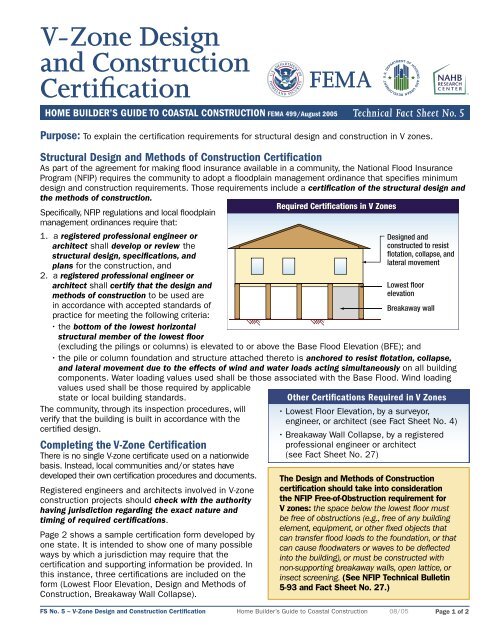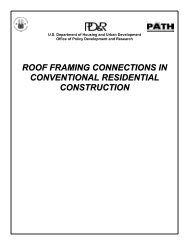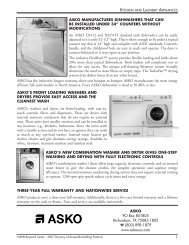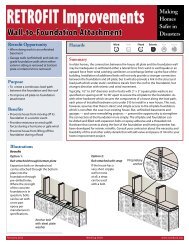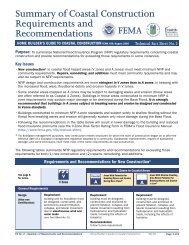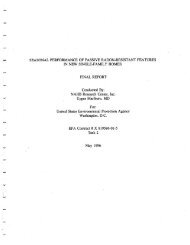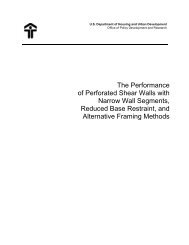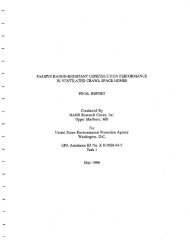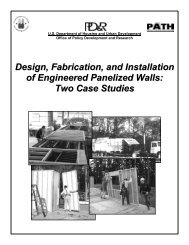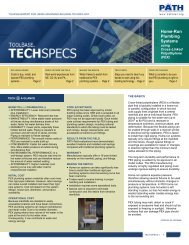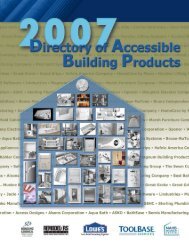Fact Sheet No. 5, V-Zone Design and Construction Certification
Fact Sheet No. 5, V-Zone Design and Construction Certification
Fact Sheet No. 5, V-Zone Design and Construction Certification
You also want an ePaper? Increase the reach of your titles
YUMPU automatically turns print PDFs into web optimized ePapers that Google loves.
V-<strong>Zone</strong> <strong>Design</strong><br />
<strong>and</strong> <strong>Construction</strong><br />
<strong>Certification</strong><br />
HOME BUILDER’S GUIDE TO COASTAL CONSTRUCTION FEMA 499/August 2005 Technical <strong>Fact</strong> <strong>Sheet</strong> <strong>No</strong>. 5<br />
Purpose: To explain the certification requirements for structural design <strong>and</strong> construction in V zones.<br />
Structural <strong>Design</strong> <strong>and</strong> Methods of <strong>Construction</strong> <strong>Certification</strong><br />
As part of the agreement for making flood insurance available in a community, the National Flood Insurance<br />
Program (NFIP) requires the community to adopt a floodplain management ordinance that specifies minimum<br />
design <strong>and</strong> construction requirements. Those requirements include a certification of the structural design <strong>and</strong><br />
the methods of construction.<br />
Specifically, NFIP regulations <strong>and</strong> local floodplain<br />
management ordinances require that:<br />
1. a registered professional engineer or<br />
architect shall develop or review the<br />
structural design, specifications, <strong>and</strong><br />
plans for the construction, <strong>and</strong><br />
2. a registered professional engineer or<br />
architect shall certify that the design <strong>and</strong><br />
methods of construction to be used are<br />
in accordance with accepted st<strong>and</strong>ards of<br />
practice for meeting the following criteria:<br />
• the bottom of the lowest horizontal<br />
structural member of the lowest floor<br />
(excluding the pilings or columns) is elevated to or above the Base Flood Elevation (BFE); <strong>and</strong><br />
• the pile or column foundation <strong>and</strong> structure attached thereto is anchored to resist flotation, collapse,<br />
<strong>and</strong> lateral movement due to the effects of wind <strong>and</strong> water loads acting simultaneously on all building<br />
components. Water loading values used shall be those associated with the Base Flood. Wind loading<br />
values used shall be those required by applicable<br />
state or local building st<strong>and</strong>ards.<br />
The community, through its inspection procedures, will<br />
verify that the building is built in accordance with the<br />
certified design.<br />
Completing the V-<strong>Zone</strong> <strong>Certification</strong><br />
There is no single V-zone certificate used on a nationwide<br />
basis. Instead, local communities <strong>and</strong>/or states have<br />
developed their own certification procedures <strong>and</strong> documents.<br />
Registered engineers <strong>and</strong> architects involved in V-zone<br />
construction projects should check with the authority<br />
having jurisdiction regarding the exact nature <strong>and</strong><br />
timing of required certifications.<br />
Page 2 shows a sample certification form developed by<br />
one state. It is intended to show one of many possible<br />
ways by which a jurisdiction may require that the<br />
certification <strong>and</strong> supporting information be provided. In<br />
this instance, three certifications are included on the<br />
form (Lowest Floor Elevation, <strong>Design</strong> <strong>and</strong> Methods of<br />
<strong>Construction</strong>, Breakaway Wall Collapse).<br />
• Lowest Floor Elevation, by a surveyor,<br />
engineer, or architect (see <strong>Fact</strong> <strong>Sheet</strong> <strong>No</strong>. 4)<br />
• Breakaway Wall Collapse, by a registered<br />
professional engineer or architect<br />
(see <strong>Fact</strong> <strong>Sheet</strong> <strong>No</strong>. 27)<br />
The <strong>Design</strong> <strong>and</strong> Methods of <strong>Construction</strong><br />
certification should take into consideration<br />
the NFIP Free-of-Obstruction requirement for<br />
V zones: the space below the lowest floor must<br />
be free of obstructions (e.g., free of any building<br />
element, equipment, or other fixed objects that<br />
can transfer flood loads to the foundation, or that<br />
can cause floodwaters or waves to be deflected<br />
into the building), or must be constructed with<br />
non-supporting breakaway walls, open lattice, or<br />
insect screening. (See NFIP Technical Bulletin<br />
5-93 <strong>and</strong> <strong>Fact</strong> <strong>Sheet</strong> <strong>No</strong>. 27.)<br />
FS <strong>No</strong>. 5 – V-<strong>Zone</strong> <strong>Design</strong> <strong>and</strong> <strong>Construction</strong> <strong>Certification</strong> Home Builder’s Guide to Coastal <strong>Construction</strong> 08/05 Page 1 of 2
<strong>No</strong>te: The V-zone certificate is not a substitute for <strong>and</strong> cannot be used without the NFIP Elevation<br />
Certificate (see <strong>Fact</strong> <strong>Sheet</strong> <strong>No</strong>. 4), which is required for flood insurance rating.<br />
FS <strong>No</strong>. 5 – V-<strong>Zone</strong> <strong>Design</strong> <strong>and</strong> <strong>Construction</strong> <strong>Certification</strong> Home Builder’s Guide to Coastal <strong>Construction</strong> 08/05<br />
Page 2 of 2


